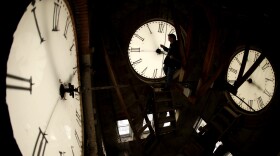Daylight saving time getting you down? The disruptive tradition of losing an hour, just to get that hour back later in the year, could soon end in Texas.
However, state lawmakers are on the fence about whether to permanently adopt daylight saving time or standard time, which maintains the clock year-round, and federal regulations have added another layer of complexity to the debate.
Several bills have been introduced in Austin this year to end the twice-a-year clock change, but a majority of Texas lawmakers propose keeping daylight saving time (DST) year-round, which would require federal approval.
Under , states are allowed to ignore DST and follow standard time throughout the year, but they’re only allowed to temporarily observe DST, from spring to fall. , filed by Democratic Sen. Judith Zaffirini of Laredo, is the only proposed bill that aims to keep Texas on standard time year-round.
“Many Texans find the clock changes disruptive and unnecessary, with research linking them to increased traffic accidents, negative health effects and decreased productivity,” Zaffirini said in a statement. “By providing Texans with a stable, year-round time system, my legislation would enhance public safety, support business operations and reduce confusion for families.”
The bill would also trigger a statewide referendum to let voters decide whether to permanently adopt either DST and standard time in Texas – again, a move that would only be possible after federal approval. Zaffirini has also introduced , which would also pave the way for a similar referendum following changes in federal law. Republican Sen. Paul Bettencourt of Houston proposed a separate, nearly identical just last week.
“This approach balances the desire for a consistent time system with the principle of letting Texans decide, which may help the bills gain additional support,” Zaffirini said.
In recent years, similar legislation in Texas has failed to reach Gov. Greg Abbott’s desk for final approval, although the governor has previously for the permanent adoption of DST in the state. The Sunshine Protection Act, which proposes adopting DST nationally, has been introduced at the federal level five times now, including this year. The bill is up for discussion in both and committees.
In December, however, President Donald Trump vocalized his support for doing away with DST throughout the country in a post to .
Along with government officials, it seems that the general public is also torn on the matter. According to conducted by the Associated Press and the National Opinion Research Center at the University of Chicago, 40% of Americans said they preferred standard time and about 31% preferred DST, while 28% said they preferred switching back and forth.




